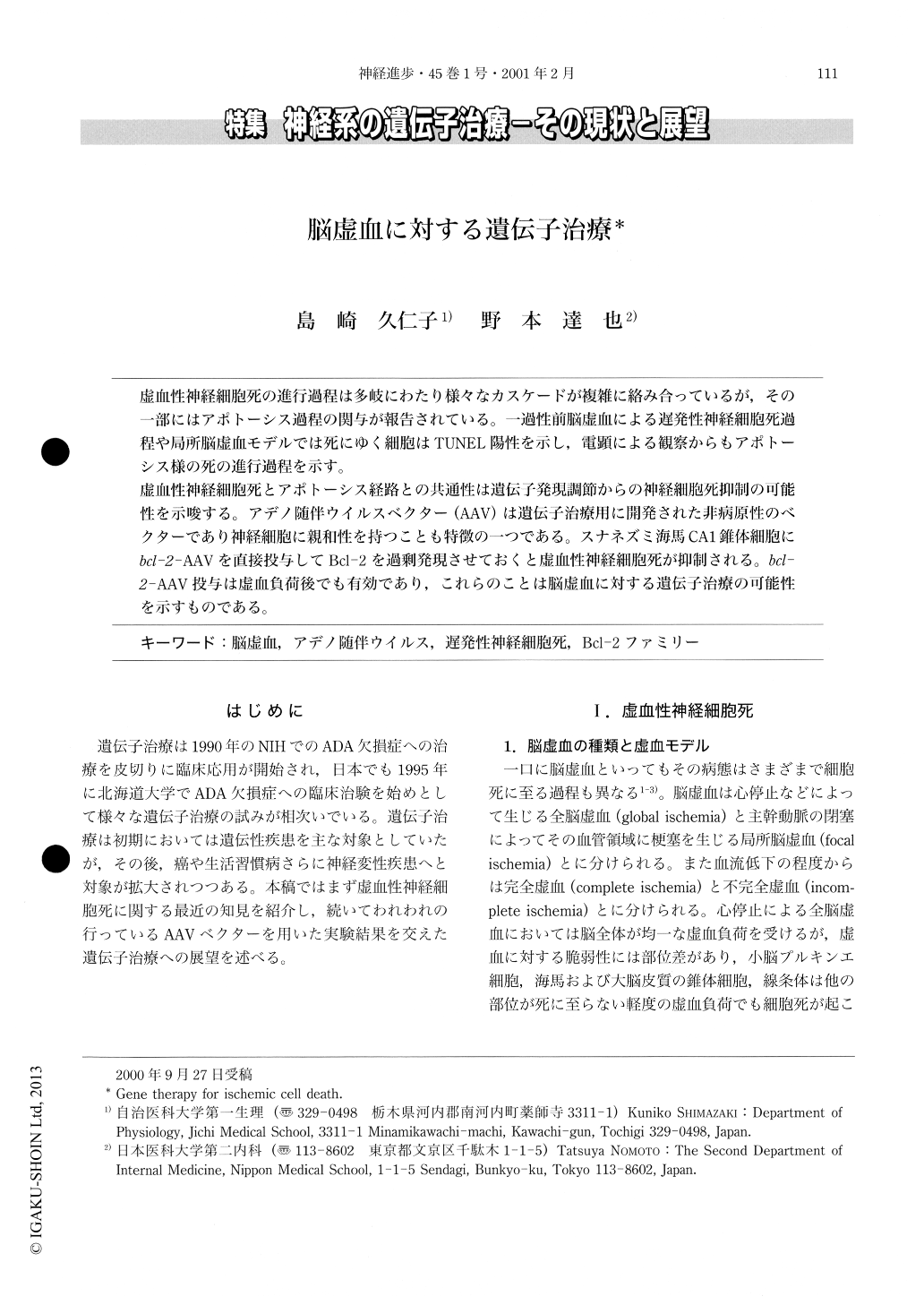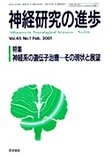Japanese
English
- 有料閲覧
- Abstract 文献概要
- 1ページ目 Look Inside
虚血性神経細胞死の進行過程は多岐にわたり様々なカスケードが複雑に絡み合っているが,その一部にはアポトーシス過程の関与が報告されている。一過性前脳虚血による遅発性神経細胞死過程や局所脳虚血モデルでは死にゆく細胞はTUNEL陽性を示し,電顕による観察からもアポトーシス様の死の進行過程を示す。虚血性神経細胞死とアポトーシス経路との共通性は遺伝子発現調節からの神経細胞死抑制の可能性を示唆する。アデノ随伴ウイルスベクター(AAV)は遺伝子治療用に開発された非病原性のベクターであり神経細胞に親和性を持つことも特徴の一つである。スナネズミ海馬CA1錐体細胞にbcl-2-AAVを直接投与してBcl-2を過剰発現させておくと虚血性神経細胞死が抑制される。bcl-2-AAV投与は虚血負荷後でも有効であり,これらのことは脳虚血に対する遺伝子治療の可能性を示すものである。
Ischemic neuronal death proceeds with a complex series of pathophysiological events in the neurons. Recent evidence has shown that some significant portions of neuronal death following ischemia result from suicide-like phenomena similar to apoptosis. This is supported by appearance of TUNEL positive neurons and by typical EM images in the process of delayed neuronal death after transient forebrain ischemia as well as focal brain ischemia. If ischemic neuronal death and apoptosis share the common pathway, regulation of gene expression might rescue neuronal death. Recently, adeno-associated virus (AAV) has been developed as a non-pathogenic vector for gene therapy. Because AAV has the characteristic of high affinity to the neurons, it is advantageous for targeting neuronal disease. We introduced bcl-2, an inhibitor of apoptosis, to AAV and injected the bcl-2-AAV to CA1 pyramidal neurons in the gerbil after ischemia. We found that overexpression of Bcl-2 effectively protected the post-ischemic neuronal death. Moreover, injection of bcl-2-AAV was effective even one hour after ischemic insult. Our results raise the possibility that induction of bcl-2-AAV is useful for gene therapy to rescue postischemic neuronal death.

Copyright © 2001, Igaku-Shoin Ltd. All rights reserved.


